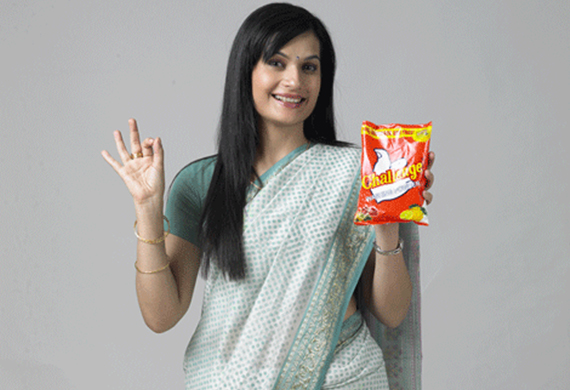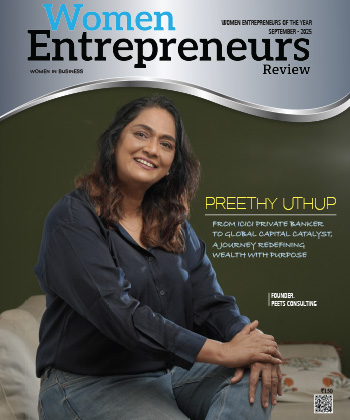
Indian Advertisements Still Uphold Gender Stereotypes
By: Navyasri, Content Writer, Women Entrepreneur
Before the rise in popularity of television advertisements and later the internet, the only way for a business to market their product to the general public was through print. Prior to the digital era, people relied on advertising in newspapers, magazines, and catalogues, which date back over a century. A typical print ad of the olden era was a call to the good housewife to learn about the new household cleaner or it was a suggestion to the dapper macho man to pick a particular brand of cigarettes because it made him manlier. To put it in a nutshell, advertising relied heavily on gender stereotypes. Gender roles essentially gave way to gender stereotypes which were used heavily in advertising.
As much as we would have liked to believe that these advertisements perpetuating gender stereotypes were a thing of the past, the current reality is far from that.
Though Indian ads on television and YouTube are superior when compared to global benchmarks in terms of gender diversity in terms of screen and speaking time, their depiction is problematic because it reinforces gender stereotypes. For example, women are more likely to be seen as married and less likely to be seen in paying occupations, and more likely to be depicted as caretakers and parents than male characters.
These are some of the findings of a report titled "Gender Bias and Inclusion in Advertising in India" released by UNICEF and the Geena Davis Institute on Gender in Media (GDI). The study looked at over 1,000 ads that aired on television and YouTube in India in 2019. The advertisements that were examined were those that had the greatest reach.
Out of all ads studied, it was concluded that female characters dominate screen time (59.7%) and speech time (56.3%). A major reason for this is their portrayal for selling cleaning supplies, food, and beauty products to female customers.
Almost every detergent and food ad featured a woman caring for her family and speaking explicitly to female audiences about family care. In a separate study conducted by GDI for the purpose of establishing global standards, it was discovered that advertisements in the United States show women with half the screen time (30.6 percent) and almost half the speaking time (33.5 percent).
Female characters are often seen to be married at a higher rate than male characters (11.0 percent compared with 8.8 percent). Female characters are three times more likely than male characters to be portrayed as parents (18.7 percent compared with 5.9 percent). While male characters are more likely than female characters to be seen making decisions about their future (7.3 percent vs. 4.8 percent), female characters are twice as likely to be seen making household decisions (4.9 percent compared with 2.0 percent ).
The report also found that female characters are more likely than male characters to be seen doing the following activities: shopping (4.1 percent vs. 2.3 percent), cleaning (4.8 percent vs. 2.2 percent), and being involved in the buying or preparation of meals (5.4 percent compared with 3.9 percent).
Male characters are more likely to be seen as smart than female characters in ads where intelligence is a part of their character (32.2 percent compared to 26.2 percent). Male characters are almost twice as likely as female characters to be shown as amusing (19.1 percent compared to 11.9 percent).
When it comes to colorism, the report found that two-thirds of female characters (66.9%) in Indian advertisements have light or medium-light skin tones, which is higher than 52.1 percent in terms of percentage of male characters. Female characters are nine times more likely than male characters to be described as "stunning/very attractive" (5.9 percent compared with 0.6 percent ). Male characters in Indian ads are invariably slim, but female characters come in a range of body sizes.
“Misrepresentation and harmful stereotypes of women in advertising have a significant impact on women — and young girls — and how they view themselves and their value to society. While we do see female representation dominate in Indian ads, they are still marginalised by colorism, hypersexualisation, and without careers or aspirations outside of the home,” said Geena Davis, Academy Award Winning Actor, Founder and Chair of the GDI adding that the stark inequality evident in portrayals of females in these advertisements must be addressed to ensure an equitable society.
Because of the impact stereotypes have had on culture, the United Kingdom has banned advertisements depicting individuals "failing to complete a mission specifically because of their gender" and depicting "stereotypical personality characteristics" in June 2020. According to Forbes, younger customers are questioning the importance of gendered ads in the digital era.
Social media has emerged as a tool to uplift others and increase self-confidence. Self-love, body pride, and diversity reign supreme. However, due to historical prejudices and a “one size fits all” mould, many ads still ignore these factors. Realistic and accurate depictions of people are becoming increasingly common.
The way society reacts to the status quo is no longer the same as it was years ago. People nowadays ask why things are the way they are and what they see. Gender stereotypes still exist in television, film, and advertising, but so do single, career-oriented women and male housewives. This modern perspective is the new standard, and it is now up to advertisers to keep up with the times.






